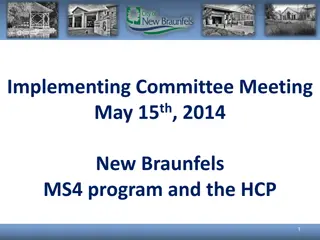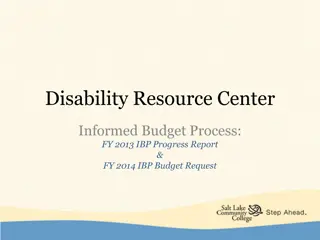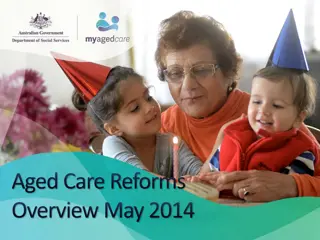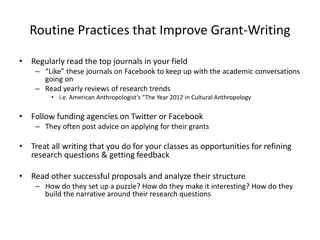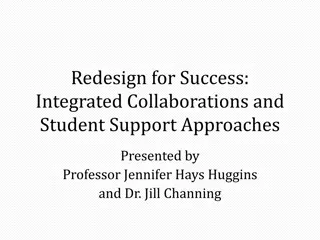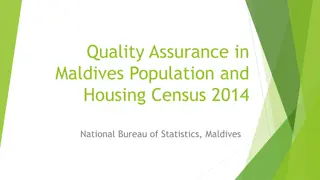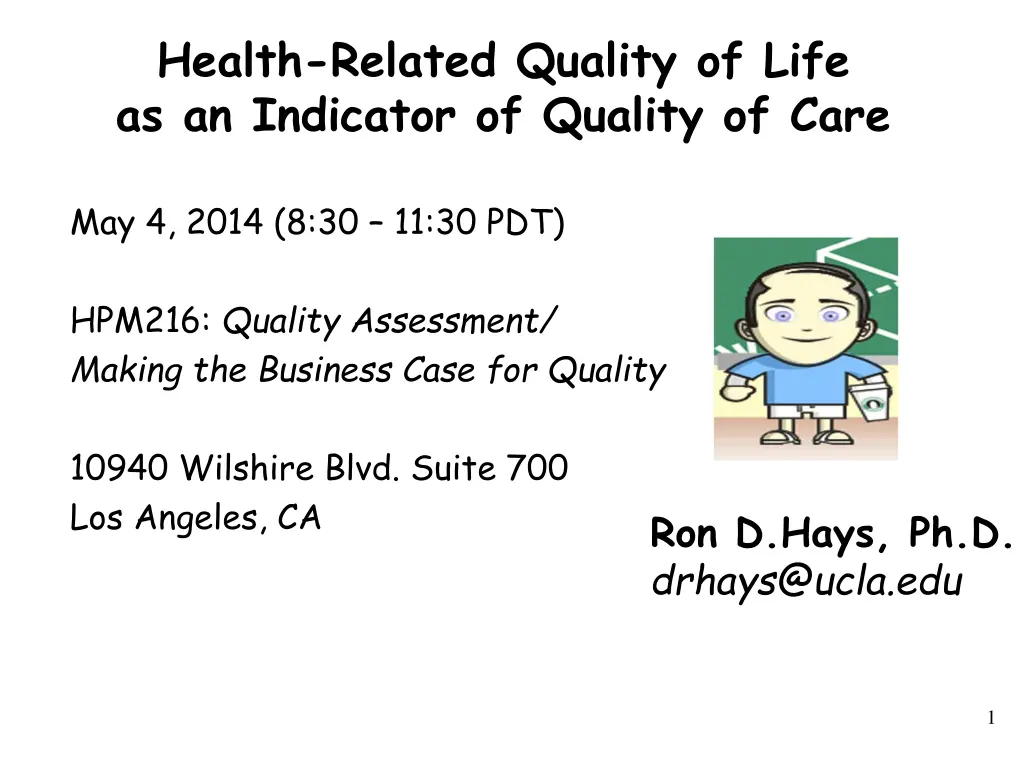
Health-Related Quality of Life: An Indicator of Quality Care
Learn about health-related quality of life (HRQOL) and its significance in assessing the quality of care. Explore examples of HRQOL in various health conditions and understand the components of HRQOL, such as emotional well-being, pain, energy, and functioning. Discover self-reported assessments of anger and related emotions over a seven-day period.
Download Presentation

Please find below an Image/Link to download the presentation.
The content on the website is provided AS IS for your information and personal use only. It may not be sold, licensed, or shared on other websites without obtaining consent from the author. If you encounter any issues during the download, it is possible that the publisher has removed the file from their server.
You are allowed to download the files provided on this website for personal or commercial use, subject to the condition that they are used lawfully. All files are the property of their respective owners.
The content on the website is provided AS IS for your information and personal use only. It may not be sold, licensed, or shared on other websites without obtaining consent from the author.
E N D
Presentation Transcript
Health-Related Quality of Life as an Indicator of Quality of Care May 4, 2014 (8:30 11:30 PDT) HPM216: Quality Assessment/ Making the Business Case for Quality 10940 Wilshire Blvd. Suite 700 Los Angeles, CA Ron D.Hays, Ph.D. drhays@ucla.edu 1
Examples of Health-Related Quality of Life in Pubmed Int J Public Health, 2014, in 8,743 coronary patients J Cancer Surviv, 2014, SF-36 in cancer survivors JAMA Otolaryngol Head Neck Surg, 2013, laryngopharyngeal reflux-HRQOL laryngopharyngeal reflux patients JAMA, 2011, sexual HRQOL in men with prostate cancer
Health-Related Quality of Life (HRQOL) How the person FEELs (well-being) Emotional well-being Pain Energy What the person can DO (functioning) Self-care Role Social 3
In the past 7 days I was grouchy [1st question] Never [39] Rarely [48] Sometimes [56] Often [64] Always [72] Estimated Anger = 56.1 SE = 5.7 (rel. = 0.68) 5
In the past 7 days I felt like I was ready to explode [2nd question] Never Rarely Sometimes Often Always Estimated Anger = 51.9 SE = 4.8 (rel. = 0.77) 6
In the past 7 days I felt angry [3rd question] Never Rarely Sometimes Often Always Estimated Anger = 50.5 SE = 3.9 (rel. = 0.85) 7
In the past 7 days I felt angrier than I thought I should [4th question] - Never Rarely Sometimes Often Always Estimated Anger = 48.8 SE = 3.6 (rel. = 0.87) 8
In the past 7 days I felt annoyed [5th question] Never Rarely Sometimes Often Always Estimated Anger = 50.1 SE = 3.2 (rel. = 0.90) 9
In the past 7 days I made myself angry about something just by thinking about it. [6th question] Never Rarely Sometimes Often Always Estimated Anger = 50.2 SE = 2.8 (rel = 0.92) 10
Item Responses and Trait Levels Person 1 Person 2 Person 3 Trait Continuum Item 1 Item 2 Item 3 www.nihpromis.org 12
Reliability Target for Use of Measures with Individuals Reliability ranges from 0-1 0.90 or above is goal SEM = SD (1- reliability)1/2 95% CI = true score +/- 1.96 x SEM if true z-score = 0, then CI: -.62 to +.62 Width of CI is 1.24 z-score units Reliability = 0.90 when SE = 3.2 T-scores (mean = 50, SD = 10) Reliability = 1 (SE/10)2 T =50 + (z * 10) 13
PROMIS Physical Functioning vs. Legacy Measures 10 20 30 40 50 60 70 14
Physical Functioning and Emotional Well-Being at Baseline for 54 Patients at UCLA-Center for East West Medicine EWB Physical MS = multiple sclerois; ESRD = end-stage renal disease; GERD = gastroesophageal reflux disease. 15 15
Significant Improvement in all but 1 of SF-36 Scales (Change is in T-score metric) Change t-test prob. PF-10 RP-4 BP-2 GH-5 EN-4 SF-2 RE-3 EWB-5 PCS MCS 1.7 4.1 3.6 2.4 5.1 4.7 1.5 4.3 2.8 3.9 2.38 3.81 2.59 2.86 4.33 3.51 0.96 3.20 3.23 2.82 .0208 .0004 .0125 .0061 .0001 .0009 .3400 .0023 .0021 .0067 16
Effect Sizes for Changes in SF-36 Scores Effect Size 50 0.53 0.36 0.13 0.35 0.35 0.21 0.11 0.41 0.24 0.30 45 40 35 30 25 Baseline 20 Followup 15 10 5 0 PFI Role-P Pain Gen H Energy Social Role-E EWB PCS MCS PFI = Physical Functioning; Role-P = Role-Physical; Pain = Bodily Pain; Gen H=General Health; Energy = Energy/Fatigue; Social = Social Functioning; Role-E = Role-Emotional; EWB = Emotional Well-being; PCS = Physical Component Summary; MCS =Mental Component Summary. 17
Effect Size (Follow-up Baseline)/ SDbaseline Cohen s Rule of Thumb: ES = 0.20 Small ES = 0.50 Medium ES = 0.80 Large 18
Amount of Change Needed for Significant Individual Change Effect Size 1.33 1.07 0.67 0.72 1.01 1.13 0.71 1.26 0.62 0.73 PFI = Physical Functioning; Role-P = Role-Physical; Pain = Bodily Pain; Gen H=General Health; Energy = Energy/Fatigue; Social = Social Functioning; Role-E = Role-Emotional; EWB = Emotional Well-being; PCS = Physical Component Summary; MCS =Mental Component Summary. 19
7-31% of People in Sample Improve Significantly % Improving % Declining Difference PF-10 RP-4 BP-2 GH-5 EN-4 SF-2 RE-3 EWB-5 PCS MCS 13% 31% 22% 7% 9% 17% 15% 19% 24% 22% 2% 2% 7% 0% 2% 4% 15% 4% 7% 11% + 11% + 29% + 15% + 7% + 7% + 13% 0% + 15% + 17% + 11% 20
Defining a Responder: Reliable Change Index (RCI) X X 2 1 ( 2 ( ) ) SEM = 1 SEM SD r bl xx Note: SDbl= standard deviation at baseline rxx = reliability 21
Amount of Change in Observed Score Needed To be Statistically Significant ( 2 (SD ) ) r - (1 (1.96) ) xx bl Note: SDbl= standard deviation at baseline and rxx = reliability 22
Implementing patient-reported outcomes assessment in clinical practice: a review of the options and considerations Snyder, C.F., Aaronson, N. K., et al. Quality of Life Research, 21, 1305-1314, 2012. HRQOL has rarely been collected in a standardized fashion in routine clinical practice. Increased interest in using PROs for individual patient management. Research shows that use of PROs: Improves patient-clinician communication May improve outcomes 23
U.S. Health Care Issues ACE Signs Access to care ~ 50 million people without health insurance Costs of care Expenditures ~ $ 2.7 Trillion Effectiveness (quality) of care 26
How Do We Know If Care Is Effective? Effective care maximizes probability of desired health outcomes Health outcome measures indicate whether care is effective Cost Effectiveness 27
Health Outcomes Measures Traditional clinical endpoints Survival Clinical/biological indicators Rheumatoid factor Blood pressure Hematocrit Patient-Reported Outcomes 28
Types of HRQOL Measures - Generic vs. Targeted - Profile vs. Preference-based 29
Generic Item In general, how would you rate your health? Excellent Very Good Good Fair Poor 30
Targeted Items Assessing Burden of Kidney Disease My kidney disease interferes too much with my life. Too much of my time is spent dealing with my kidney disease. I feel frustrated with my kidney disease. I feel like a burden on my family. 31
Is CAM Better than Standard Care (SC)? 100 90 80 CAM 70 SC 60 CAM 50 SC 40 30 20 10 0 Physical Health Mental Health CAM > SC SC > CAM 32
Is Acupuncture Related to Worse HRQOL? Subject Acupuncture HRQOL (0-100) 1 2 3 4 5 6 7 8 9 No No No No No Yes Yes Yes Yes Yes dead dead 10 50 75 100 0 25 50 75 100 Group n HRQOL No Acupuncture Yes Acupuncture 3 5 75 50 33
Goal is Access to Cost-Effective Care Cost Effectiveness ( Utility ) 35
QALYs: The Basics Milton Weinstein, George Torrance, Alistair McGuire (Value in Health, 2009, vol. 12 Supplement 1) What is value? Preference or desirability of health states How are QALYs used? Societal resource allocation Personal decisions such as decision about whether to have a treatment Societal or program audit Evaluate programs in terms of health of the population. 37
http://araw.mede.uic.edu/cgi- bin/utility.cgi http://araw.mede.uic.edu/cgi-bin/utility.cgi 38
SG>TTO>RS SG = TTOa SG = RSb Where a and b are less than 1 39
0.435 40
HRQOL in SEER-Medicare Health Outcomes Study (n = 126,366) Controlling for age, gender, race/ethnicity, education, income, and marital status. 41
Distant stage of cancer associated with 0.05-0.10 lower SF-6D Score 0.8 0.78 0.76 0.74 Local-Region 0.72 Distant 0.7 Unstaged 0.68 0.66 0.64 Breast Pros. Col. Lung Figure 1. Distant Stage of Disease Associated with Worse SF-6D Scores (Sample sizes for local/regional, distant, and unstaged: Breast (2045,26, 347); Prostate (2652, 61 and 633), Colorectal (1481, 48 and 203), and Lung (466, 47 and 65). 42
Questions? drhays@ucla.edu Powerpoint file at: http://gim.med.ucla.edu/FacultyPages/Hays/ 43

